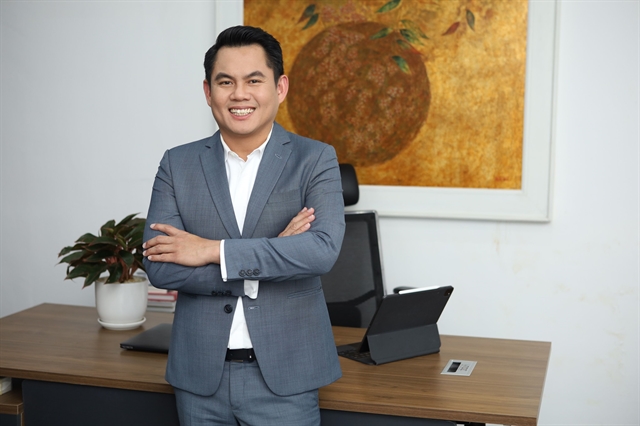 Inner Sanctum
Inner Sanctum

 |
| Dylan Yip, vice president of partnership development, Asia Awards Organisation. Photo courtesy of Asia Awards Organisation |
Aiming to honour outstanding enterprises, organisations and individuals in varied fields, the Asia Awards Organisation (AAO) will launch three major awards in the first half of 2023: the Asia Architecture Design Awards, Asia Hospitality Awards and Asia Best Workplace Awards.
Việt Nam News talks to Dylan Yip, vice president of partnership development, and the creator of the AAO about this year’s awards.
Inner Sanctum: Could you share some general information about these various award ceremonies and the criteria for 2023?
The AAO is an organisation based in Singapore, proudly organising three reputable award recognition in different fields and Industries. The first to kick off is the Asia Architecture Design Awards (AADA) which is slated to take place in June 2023, in Singapore. In a nutshell, AADA aspires to elevate talented individuals or enterprises in the emerging Asia architecture and design industry, and to provide a platform to showcase their outstanding work globally
Whilst the Asia Hospitality Awards (AHA) emphasises the excellent performance of hospitality players, be in lodging, food and beverage or even the airline industry. The hospitality industry was the toughest hit during the unprecedented COVID-19 pandemic but is projected to achieve a remarkable turnaround as countries start to re-open for people to start travelling again. The AHA comes at the right time to support and provide an arena for players to get recognised at an international level.
The Asia Best Workplace Awards (ABWA) will be announced in due course and give prominent recognition to the Human Resource field.
The AAO has launched the AADA 2023, with 30 categories in six main areas: Architectural Design, Interior Design, Furniture Design, Firms for Architecture Design, Firms for Interior Design and Firms in Furniture Manufacturing & Retailing. The deadline for applications is February, and there is no limit to the number of applicants. The winners’ gala night will take place in Singapore this June, gathering leading experts, influencers and international media units.
Inner Sanctum: What are your expectations of the applications?
I’m highly confident that the response will be positive, mainly from the fields of real estate developers, architecture, interior designers, luxury household furniture to branded kitchen appliances to sanitary fittings, wares, suppliers/vendors, to materials manufacturers. Hospitality includes F&B, (restaurants, dining, and cafés, etc) and tourism players. Participants are expected to come from Asia as well as across Europe.
Inner Sanctum: How do you evaluate Vietnamese architecture, design and tourism businesses and their influence in Asia?
Vietnamese architecture is mainly coming from the angle of pseudo classic and post-modern design. There is still room for improvement in terms of the aesthetics, to “super skyscrapers” compared to Dubai, Singapore, and Hong Kong, etc.
I hope to see an iconic building designed by local or international architects in Việt Nam. Future creation of a renowned landmark in Việt Nam that is recognised by the World Guinness Record will soon be an influence in the Asia region.
There is a lack of creative or innovative designs, as well as sustainability green building design, which the world is pivoting to. We need more green buildings. I hope the Vietnamese architects can explore and uplift the design aspect.
I always think that Vietnamese architecture in an unusual project must keep the national cultural identity and integrate with the world. This will make a big difference in the architecture of Việt Nam with other countries. For example, in Singapore or China, there are skyscrapers that are very famous and have a national identity. I think that a cultural imprint will be the foundation, helping Vietnamese architecture develop quickly and go out to the world.
In addition, Việt Nam needs to keep its national cultural identity through architecture to pass it on to the next generation. When looking at the nation's history and iconic architectural works, they will become proud.
Inner Sanctum: Having spent years living and working in Việt Nam, how do you evaluate the country's change in the field of architecture and infrastructure?
Back in 2017, I was seconded to Việt Nam as head of regional business development by a Singapore-based real estate developer, helping it to expand in Việt Nam, mainly in HCMC. I grew my interest in Việt Nam from there and have seen fast-growing GDP for the last five years, plus two-thirds of the general population are below 35 years of age. I find that Vietnamese in general are hard-working. There are a lot of opportunities, be it jobs, setting up business, or in F&B, etc.
However, it takes years to complete buildings and infrastructure. Lots of developments are on hold and incomplete. Therefore, with my last six years, there have been no major changes or significant completed buildings or infrastructure added. Construction tends to stop halfway.
The most memorable thing about working and living in Việt Nam is my study of the local culture and heritage. Throughout this learning curve, I have met many friendly Vietnamese who are warm, friendly and hospitable. VNS